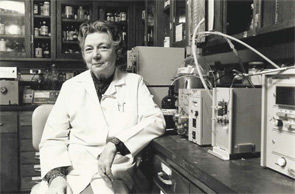“She was the kind of person,” he says, “who would go to bat for you, work behind the scenes, and find ways help you any way she could. She was proactive and made it her business to look for opportunities and make those available to you.”

An Astute Observer
Matthew H. Liang, MD, MPH, professor of medicine at Harvard Medical School; professor of health policy and management at Harvard School of Public Health, Brigham and Women’s Hospital; and study director at VA Cooperative Studies Program, all in Boston, first met Dr. Hess at an NIH site visit to the Brigham program. He recalls her as “a stately and dignified person, who made me feel that my research was worthwhile.” On the site visit, she observed to the group, “Oh, you’re doing social rheumatology.” This characterization of his work stuck with him, says Dr. Liang, helping to validate his investigations. “She was one of those senior people in rheumatology who had the vision to put a ‘name’ to our work and appreciate that, even though it was not conventional, it was important. It made a big, big difference.”
Patients First
Dr. Hess’ dedication to patient concerns drove her tireless enthusiasm for lupus research, Dr. Singh believes. Her work on the environmental aspects of lupus beginning over 30 years ago advanced the thinking in this area, he notes.4 Dr. Singh, who has published several papers on hydrocarbon oil-induced lupus in mice, cites her work often. Yolanda Farhey, MD, professor of clinical medicine in the division of immunology and rheumatology at the University of Cincinnati, says, “Not only was Dr. Hess interested in the environmental factors in lupus, but she opened our minds to the idea. Both of us have a fond spot for these subjects, and have been collaborators and also friends.”
The Rheumatologist asked Dr. Hess about the initial reception from colleagues when she first began positing the theory of environmental factors. “In the beginning, people said, ‘Oh well, I’m sure these diseases have nothing to do with the environment.’ ” She quipps, “But at least they didn’t shoot me! Then more and more people became interested [in this line of investigation] and environmental factors became a whole section in the rheumatic diseases.” Dr. Hess participated in the ARA’s Industry Committee and was one of the authors of a consensus paper, “Approaches for identifying and defining environmentally associated rheumatic disorders.”5


